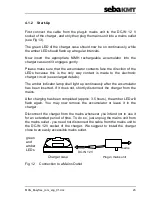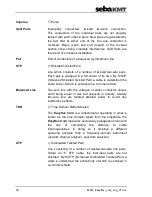
54
MAN_Easyflex_com_eng_01.doc
6.4
Glossary
Resolution
In a
→
TDR device, resolution describes the minimum
distance between two successive faults in a cable at which
the events are depicted on the screen as individual echoes
which can be discriminated and, consequently, can be
measured. When the echoes superpose each other, the
starting time of the second echo – its so-called foot point –
cannot be measured. In this event the resolution is too
small. Resolution depends on the duration of the used
→
pulse. Obviously short pulses mean much better
resolution than long pulses. The distance range which can
be covered, on the other hand, is much shorter for short
pulses as compared with long ones.
Pulse
In a
→
TDR device, pulses are used as transmitter signals.
A pulse is an electrical signal with high amplitude and short
duration. When travelling along the cable, each pulse is
more and more deformed (attenuation of amplitude,
increase in signal duration). The width (duration) of a pulse
is measured between those points at which the pulse has
half its maximum amplitude. In locating a fault, its distance
is determined by moving the cursor to the foot point of the
echo – i.e. to its starting point. As each pulse grows wider
and wider when travelling along the cable, the achievable
→
resolution is more and more reduced with growing distance.
(Factor of)
Propagation Time
NVP
Balancing Network
The balancing network is for simulating the input resistance
of the cable to be tested. It is used for suppressing the
display of the transmitter pulse so that reflections can be
depicted and measured directly from the output of the
Easyflex Com – there is no dead zone as otherwise usual.




































